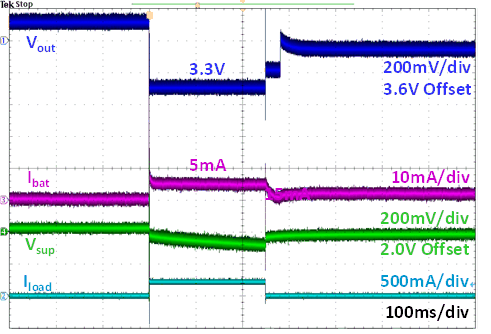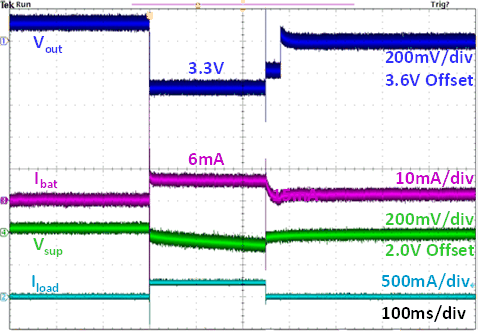SLVAF41A March 2021 – November 2021 TPS61094
6.1.1 NB-IoT Data Transmission
The NB-IoT data transmission (phase 1) zoom in waveform is as shown in the Figure 6-2 and Figure 6-3. It can be seen that during high pulse current load emulating NB-IoT module, the output voltage of TPS61094 is regulated at 3.3 V to maintain normal work of system. At the same time, the output current of LiSOCl2 battery is about 5 mA or 6 mA both at -25 degC and 25 degC, so that the LiSOCl2 battery lifetime can be maximized referring Figure 1-2.
 Figure 6-2 The Performance of TPS61094
with Supercap Solution at -25degC
Figure 6-2 The Performance of TPS61094
with Supercap Solution at -25degC Figure 6-3 The Performance of TPS61094
with Supercap Solution at 25degC
Figure 6-3 The Performance of TPS61094
with Supercap Solution at 25degC